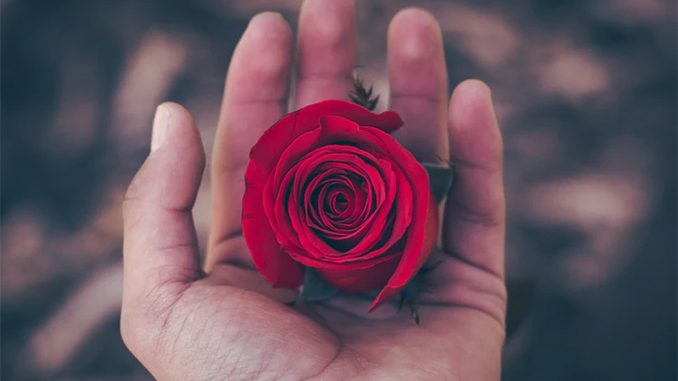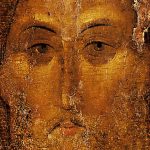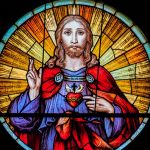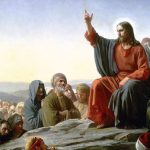
“Revival” is not a common word in the Episcopalian lexicon, but the spiritual excitement that permeated All Angels’ Church under the Rev. Martyn Minns may fairly be called a revival. There were conflicts and failures, of course, but I, for one, revived. I experienced a Christian community unlike any I had known before and felt that I was growing in strength and understanding.
Like all the revivals that flash and flame through American history, this one eventually fizzled. After a couple of years, my house church was struggling, the eating disorder support group I had formed had dwindled, and my relationship had foundered. My friendships shifted as some of us married and others moved on. Martyn himself took a new position in Virginia in 1991, and the worship culture at All Angels’ became more sedate.
Seeking orthodoxy
None of the above amounted to a spiritual crisis, in my thinking. We were merely going through a dry spell. In my faith life, however, I was wrestling with a question that pressed on me with growing force. All Angels’ had been my parish home since my arrival in New York City, but I believed that the Church needed to be larger than one parish. Individual Episcopalians ranged from near atheism to near fundamentalism, and the “broad” tent of the denomination provided a roof over all their heads, but the Episcopal Church as an institution was moving in a different direction than the one I had taken.
Should I simply trudge on as an eccentric Episcopalian? I doubted it, because my struggle with an eating disorder had taught me to seek out the wisdom of the body, and the Church was the Body of Christ. Healthy bodies have unity and integrity. The cells are specialized, but each cell contains the same DNA. Moreover, in studying its history, I could not avoid concluding that the Episcopal Church, as a distinct communion, sprang not from the self-gift of Christ but from the realpolitik of King Henry VIII.
I read journals like Touchstone and Epiphany that sought to articulate a Christian orthodoxy for the modern age, and I began to explore the possibility of changing to a different communion, one that had a credible claim to be the Church founded on Jesus Christ Himself. Eastern Orthodoxy attracted me, but it seemed too culturally specific to be the universal Church. As for the Catholic Church, it had the best claim to universality, and I was drawn to the Virgin Mary, but some of its teachings contradicted Sacred Scripture, or so I thought.
By 1993, I had left All Angels’ and was attending a small, beautiful Episcopalian church that reminded me of the church I had attended as a child. This parish, with only a few, mostly elderly parishioners, was apparently dying, and I had not found a new home. Feeling lonely once again, seeking spiritual guidance, I prayed Psalm 62 daily:
For God alone my soul waits in silence;
from him comes my salvation.
He only is my rock and my salvation, my fortress;
I shall not be greatly moved. (Ps. 62: 1-2)
I sensed that I would find my fortress in the upcoming year.
Communion, no; Rosary, yes
Toward the end of the year, I decided that, despite my misgivings, I had no alternative but to inquire into the Catholic Church. Only the Catholic Church could lay claim to the universality I was seeking, and it was the only Church that clearly taught against artificial contraception, a practice I had rejected because it contradicted the design of the human body. I had learned that even the Eastern Orthodox were slightly shaky on that issue.
Aware that many Catholics rejected the teachings of their own Church, and leery of RCIA because I had heard that its catechists were often lax in their teaching of doctrine, I asked a Catholic friend whom I knew to be faithful to recommend a parish where I would receive reliable instruction.1 She recommended several parishes. I chose the Church of Our Savior in midtown Manhattan and visited it one afternoon. Built in the 1950s, the parish was almost Eastern in its richness. A large image of the Transfiguration, dim and mysterious, was painted onto the back wall of the sanctuary. Its dominant color was velvety green.2 I asked to meet with a priest and was introduced to Father Richard Neilson, a dignified Scotsman, trim and sober in his black cassock. At that point, I had only two questions for him.
“I understand that things have changed since Vatican II. Am I able to receive Communion in the Catholic Church as a non-Catholic?” I thought not, but I might as well ask. I was remembering how I had wept at St. Ignatius Church in Tokyo in 1984, the night Mother Teresa spoke there, because I was excluded from the sacrament.
Father answered, “No.”
“All right. Will you teach me how to pray the Rosary?”
Father answered, “Yes.” He then gave me a clear plastic Rosary and an instructional pamphlet. I still had the small black plastic Rosary I had received at the time of Mother Teresa’s visit to Japan, but I had never learned the devotion. Now, I began to pray the Rosary with the beads Fr. Neilson had given me.
I found my fortress and my patron Saint
In early January, while wandering through a bookstore, I noticed a Hallmark calendar with a castle theme. The cover featured a striking photograph of Neuschwanstein Castle in southern Germany. The castle rises out of a sea of silvery-blue clouds, tall and shining white. I wanted the calendar, but I did not need it, and funds were tight. I left without buying it, but I could not shake the image of the castle from my mind.3 The following day, I returned to the bookstore and purchased the calendar.4 Led by some urge, I also purchased a smaller calendar featuring roses.
Later that month, I called Fr. Neilson and asked for instruction in the Catholic Faith. I began one-on-one catechesis with him. Besides the main documents of Vatican II, Father Richard, as I called him, had me read Cardinal Newman’s Apologia Pro Vita Sua and loaned me a fragile booklet, published around 1946, on Pope Honorius I, who had supposedly taught heresy. It was the best treatment of the subject he had found, said Fr. Richard. It was probably my Catholic friend who introduced me to two stalwarts of popular Catholic apologetics: Scott Hahn and Karl Keating. I read others as well, and my objections to Catholicism, which were mostly based on misunderstanding, fell away easily. I resolved to enter the Catholic Church. I had found my fortress.
One advantage of being an adult convert was that I had the freedom to choose my own patron saint. I wanted someone I could get to know, someone who had left a written body of work. Looking for inspiration, I entered a Catholic bookstore. My eyes fell immediately upon a book sitting on a shelf across the room. It had a castle on its cover. The book was Interior Castle by St. Teresa of Avila. After looking through the pages for a while, I decided that I had my patron.5 Not long after, I was delighted to learn that my chosen saint’s feast day was October 15, the day before my birthday.
As I completed my catechesis, the time came to select a day for my reception into the Catholic Church. Fr. Richard pointed out that the next major holy day was August 6th, the Feast of the Transfiguration. The Transfiguration was already important to me because the teaching contained in 2 Peter 1:16-22, the passage that had led me to a new confidence in Scripture, is anchored in the same vision. August 6th was also the patronal feast of the Church of Our Savior and, conveniently, it fell on a Saturday in 1994.
We settled on this day for my entry into the Church and arranged for me to make my first Catholic confession on August 4th, the feast day of St. John Vianney, the patron saint of priests and a gifted confessor. Remembering my Episcopalian confirmation two decades earlier, I purchased a white dress for the occasion. The Feast of the Transfiguration was a glorious day, and I was surrounded by friends and well-wishers.
Yet, the following day, I was depressed. Perhaps I had expected too much from my first reception of the Eucharist. Still, it was the Body and Blood of Christ Himself! I accepted this teaching on authority, but I had never sensed this Presence during my prayers before the Blessed Sacrament. I had hoped that once I ingested the Body of Christ, I might be transported. Instead, I felt just the same. I was also grieving the loss of years. It had taken me nearly half a lifetime just to make my way into the Catholic Church, and what was I to do after such a late start? I had little else to show for my thirty-three years, the entire earthly lifespan of Jesus Christ Himself.
The depression continued for nearly a month. I noted in my journal that on Sunday, August 21, the homilist preached on the need to hold fast to the truth of God’s presence in the Eucharist. I remembered also that in each Gospel account of the Transfiguration, God the Father, speaking from the cloud, had identified Jesus Christ as His beloved Son and commanded the apostles, “Listen to him.” (Matt 17:5; Mk 9:7; Lk 9:35).
A fragrant new beginning
On September 5th, I prayed a Rosary while asking to listen to God. I received a fourfold answer. This communication resembled the one I had received when my eating disorder was healed in 1984. I heard no voice; there were no words, but it seemed to me that the message was imprinted directly on my mind:
- “You have fought a battle for ten years. You have fought hard and fought well.”
- “You strayed several times, but each time I prevented you from straying too far.”
- “You were never lost. You only felt that you were lost because you could not see your way. In reality, you were drawing steadily closer to Me.”
- “You have always obeyed me to the degree that your understanding permitted.”
With that quadruple affirmation, the depression lifted, and the joy of my newfound Catholicism returned.
My birthday that year had a rosy glow. Literally. My friends who celebrated with me did not know about my rose-themed calendar, and not all of them were Catholic, but every gift I received had a rose element. I remember rose-scented tea, artisan stationery containing pressed rose petals, and a brooch with a floral design that included roses. Not only that, but each gift was wrapped in rose-colored paper and ribbons.
It was a fragrant conclusion to the year of castles and roses. Now, I would launch on a new pilgrimage.
Previous essays in this series:
• “Yes, Virginia, there is a Satan: A Conversion Story, Part One” (August 5, 2025)
• “A funny thing happened on my walk up Broadway: Part Two of a conversion story” (August 22, 2025)
• “A Light That Shines in the Dark: A Conversion Story, Part Three” (September 1, 2025)
Endnotes:
1 The Rite of Christian Initiation of Adults was designed to prepare adult converts for reception into the Catholic Church. In 2021, the process was restructured and renamed OCIA, the Order of Christian Initiation of Adults.
2 The Transfiguration painting was later replaced by an image of Christ Pantocrator, Christ “Ruler of All.”
3 I learned nothing of the history of Neuschwanstein until much later.
4 I believe I was also remembering a novel I had read as a teenager, Elizabeth Goudge’s The Castle on the Hill (1942). It was one of the first books I read when I migrated from the children’s room to the adult section of our town library. A melancholy tale of an aristocratic family in England during World War II, it was almost too bitter for me. More than the novel itself, the epigraphic poem dedicated to the castle captured my imagination. It begins with a description of the castle in ruins, frozen in the winter night, haunted by grieving shadows. Sunrise brings a transformation, and the same castle becomes a fortress, defended by fearless warriors in the endless war against evil. The poem ends on a triumphant note: “Beyond the night, forever the sun will rise.” I realized that it was not a work of genius, but the poem moved me so much that I typed it up to memorize it after I returned the novel to the library. I still have the fragile yellow sheet, typos and all.
5 My choice of a patron saint is coupled in my mind with an amusing episode. As I approached the Catholic bookstore, a group of Chabad Lubavitch Jews were standing nearby, seeking Jews in their revival effort. One of them was a boy, about thirteen years old. He asked me the classic “Lubavitcher” question: “Excuse me, Miss, are you Jewish?” I answered, “No, I’m not Jewish.” “Have a nice day!” the boy replied. As I exited the store, I encountered the same boy. He asked me, “Excuse me, Miss, are you Jewish?” I answered, “No, I’m still not Jewish.” “Have a nice day!” the boy replied. I thought, “At least he wishes me a nice day. The adults, when they learn you aren’t Jewish, have nothing more to say to you.”
If you value the news and views Catholic World Report provides, please consider donating to support our efforts. Your contribution will help us continue to make CWR available to all readers worldwide for free, without a subscription. Thank you for your generosity!
Click here for more information on donating to CWR. Click here to sign up for our newsletter.














